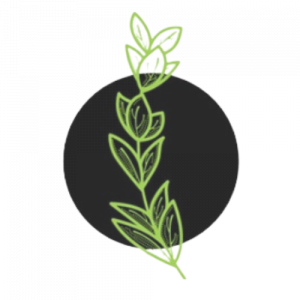In the right dose, anxiety is a crucial part of a healthy life. It helps us stay alert to physical threats and navigate the complexities of modern life—relationships, finances, family, health. Our nervous systems are constantly working to manage it all. A balanced level of alertness helps us engage with the world effectively, thanks to the limbic system, which not only regulates our fear and anxiety responses but also shapes our emotions and social interactions.

At the core of this system is the amygdala, acting as an alarm, and the prefrontal cortex, which offers a calming influence through rational interpretation.
When these two work well together, we feel balanced and in control. But when anxiety overpowers the calming influence of the forebrain, it can lead to anxiety disorders.
Anxiety disorders develop when hyper-arousal becomes constant, interfering with quality of life. Physical responses like muscle tension and rapid breathing, which once helped us stay alert, now disrupt our ability to relax.
This ongoing tension can fuel conditions like generalized anxiety disorder, social anxiety, or avoidance behaviors. While each anxiety disorder has unique features, this article will focus on general strategies for easing anxiety and building a more supportive relationship with it.
Here are four holistic strategies to help manage anxiety and build resilience:
1. Exercise: Building Resilience Through Movement
Exercise can be a powerful way to break the cycle of anxious thoughts. When the body enters an active state, prioritizing oxygen delivery to muscles, the brain shifts focus away from rumination. Engaging in intense exercise also recruits the prefrontal cortex, reinforcing neural pathways that help dial down anxious responses. Exercise not only builds physical resilience but also helps regulate stress hormones, bringing balance to the mind.
To combat anxiety effectively, aim for an intensity level where your elevated heart rate and breathing begin to quiet that inner voice. Enjoying the activity and keeping it safe are key to sustaining a practice that promotes long-term benefits. Remember exercise comes in many forms, take your time finding a style that resonates with you. For some people, high intensity, boot camp style classes may offer a strong mental reset and distraction from anxiety, for others this may be the opposite of fun. Keep your focus forward, listen to your body, think playfully and you’ll find your way.
2. Breathwork: Calming the Mind with Intentional Breathing
Breathwork is another powerful tool for down regulating anxiety. Incorporating a cool-down period after exercise or starting a morning routine with breathwork begins to rewire neurological patterns. Anxiety often manifests as shallow, chest-centered breathing, which can be alleviated by shifting to deeper, diaphragmatic breaths.
Gentle movements, like Qi Gong, or simply sitting still and observing the body can enhance this calming effect. Rather than attempt to control the quality of breath, try taking on a mindful yet passive approach, watching your natural respiration. Notice how your body moves with each breath, relaxing into the rhythm without exerting an effort.
As you do, the gentle tempo influences the nervous system. By making this a daily practice, you retrain your system to respond with ease, building resilience before daily demands challenge this state. At Adaptive Healing Medicine, we’re developing resources on both exercise and breathwork to support our patients in cultivating calm.
3. Nutrition: Fueling Mental and Physical Balance
Diet and nutrition play a significant role in managing anxiety. The brain’s high metabolic demands mean that it can be highly sensitive to hormone imbalances, inflammation, and other stressors—all of which require effective nutrient intake and waste removal at the cellular level.
In Anxiety Free with Food, Liana Werner-Gray highlights foods to avoid for better mental health, including refined sugars, refined carbs, processed foods, and unhealthy oils. Refined sugars, for instance, cause strong glucose spikes, which disrupt the balance of plasma and stress the brain and other organs. Meanwhile, contaminants like pesticides, preservatives, and food additives can exacerbate anxiety through biochemical disruption.
Unstable oils like vegetable and canola oils, lacking bioavailability, can even cause cellular damage. Opting for whole foods and healthy fats helps keep cellular inflammation down and supports brain health.
To reduce exposure to these potential agitants, prepare meals at home whenever possible. Cooking mindfully not only activates the parasympathetic nervous system—important for digestion—but also provides a sense of grounding. If you’re new to cooking, see it as a skill worth exploring, offering both health benefits and a relaxing mental break. Embrace the learning curve—after a few smoke alarms, you’ll be amazed at your culinary prowess!

4. Professional Support: Building a Holistic Anxiety Management Plan
Sometimes, seeking professional help is the best step toward managing anxiety. As an acupuncturist, I find that anxiety is often quickly and effectively managed through treatment, allowing patients to experience a new state of balance. Cognitive behavioural therapy (CBT) and other talk therapies are also excellent options, helping patients examine responses to various situations and develop strategies for overcoming triggers and negative patterns.
A skilled therapist can enhance awareness of your relationship with your environment, guiding you toward emotional resilience.
Additionally, medication may be appropriate in some cases to balance brain chemistry, especially when anxiety feels unmanageable. Medication can act as a supportive tool, used alongside lifestyle changes to help stabilize the nervous system and foster long-term resilience.

Managing anxiety often requires a multi-faceted approach that includes movement, breathwork, nutrition, and professional support.
By acknowledging the interplay between physical health, mental well-being, and external influences, we can create strategies to face life’s challenges with greater resilience.
Embrace the journey toward calm and focus on healthful actions that support your well-being.


